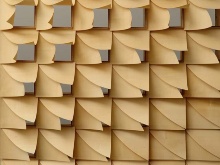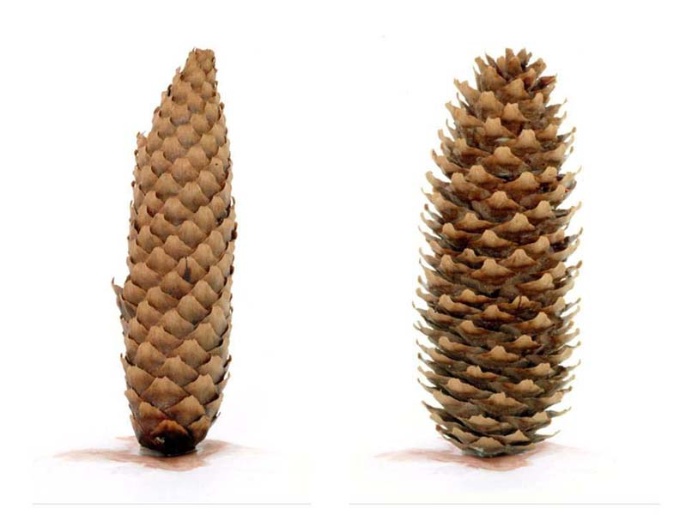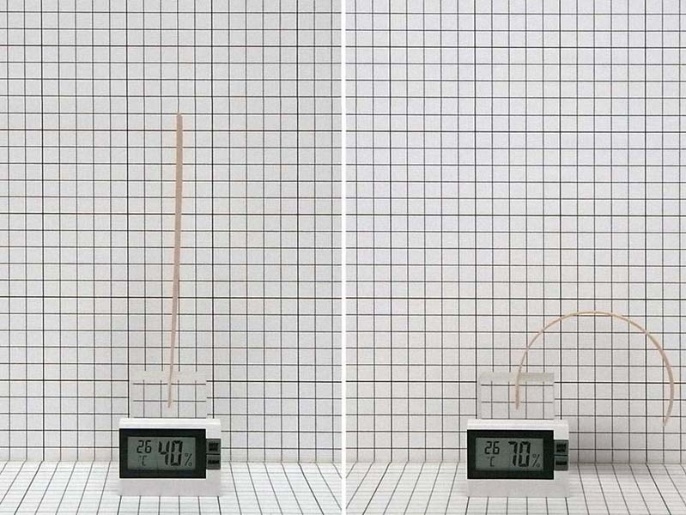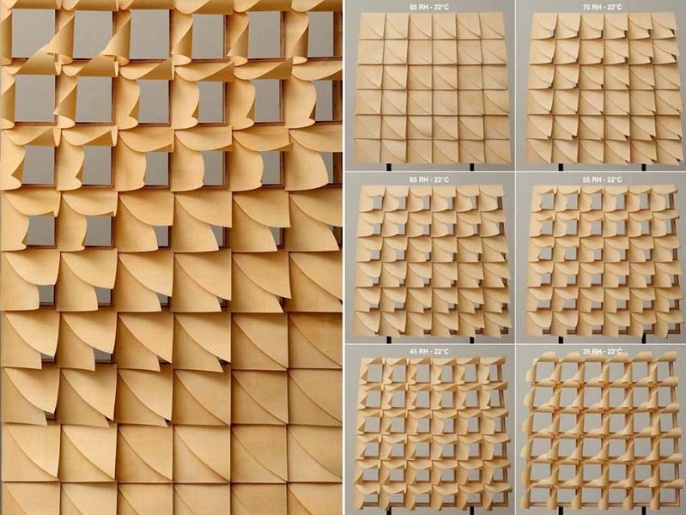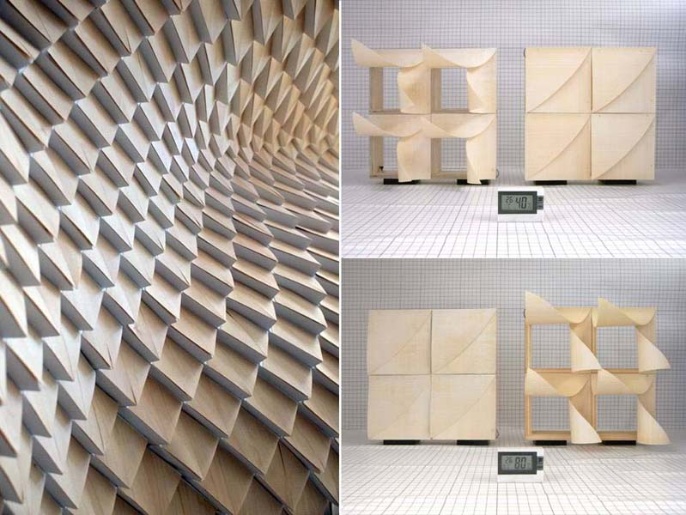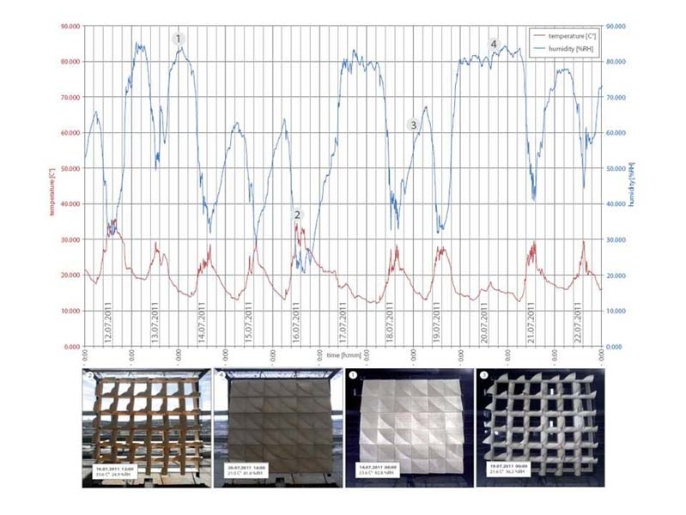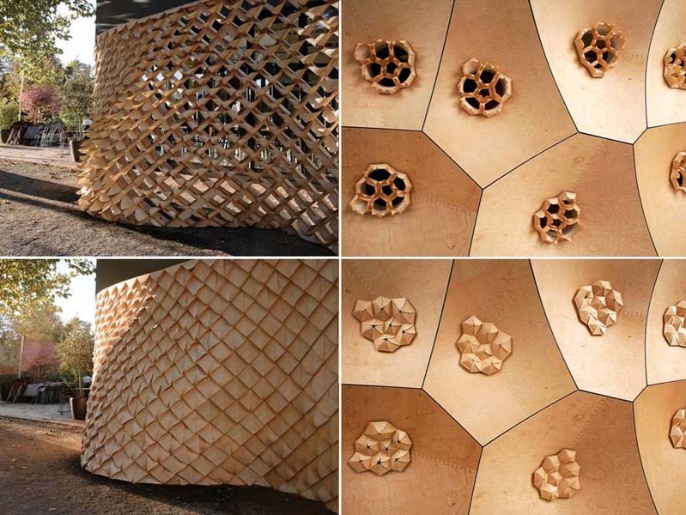Biomimetic Responsive Surface Structures
In nature, anisotropy and hygroscopy is utilized to exploit dimensional changes triggered by changing climatic conditions to induce shape changes to reactive material elements. Material systems in plants are not only making use of an anisotropic material set-up to adapt to structural forces, in combination with hygroscopic properties they can also perform kinematic and environmentally responsive movements without the use of muscles. Unlike engineered solutions, here simple material elements are at the same time sensor, actuator, and regulator. These systems therefore provide a novel conceptual and practical framework for truly environmentally responsive architectural surface structures. With the advancements in computational design, computer aided manufacturing, and digital sensor technologies, a novel materially-oriented design approach becomes possible, which enables the design and manufacturing of climate responsive surface structures with no need for any additional mechanical or electronic control.
PROJECT TEAM
ICD Institute for Computational Design and Construction - Prof. Achim Menges
Scientific Development
Research Assistants - Frederik Ernst, Maria Hänichen, Norbert Jundt, Florian Krampe, Georg Ladurner, Michael Pelzer, Michael Schnell, Christopher Voss
Selected Publications
Reichert, S., Menges, A., Correa, D.: 2014, Meteorosensitive Architecture: Biomimetic Building Skins Based on Materially Embedded and Hygroscopically Enabled Responsiveness, CAD Journal. accepted for publication
Correa, D., Krieg, O., Menges, A., Reichert, S., Rinderspacher, K.: 2013, HygroSkin: A prototype project for the development of a constructional and climate responsive architectural system based on the elastic and hygroscopic properties of wood, in Beesley, P., Del Barrio, A., Khan, O., Stacey, M., van Overbeeke, E. (eds.), Proceedings of the 33nd Annual Conference of the Association for Computer Aided Design in Architecture (ACADIA) – Adaptive Architecture, Waterloo, pp. 33-42. (ISBN 978-1-926724-22-5)
Menges, A., Reichert, S.: 2012, Material Capacity: Embedded Responsiveness, Architectural Design, Vol. 82 No. 2, Wiley Academy, London. pp. 52-59. (ISBN: 978 0470973301)
Reichert, S. and Menges. A.: 2010, Responsive Surface Structures, Bionik: Patente aus der Natur, Proceedings of Fifth Bionics Conference, Bionik-Innovations-Centrum (B-I-C), Bremen (Germany) 22-23 October 2010, pp. 28-35. (ISBN 978-300033467-2)
Menges, A.: 2009, Performative Wood: Integral Computational Design for Timber Construction, reform: Building a Better Tomorrow, Proceeding of the 29th Conference of the Association For Computer Aided Design In Architecture (ACADIA), Chicago (USA) 21-25 October 2009, pp. 66-74. (ISBN 9780984270507)
Hensel, M., Menges, A., Sunguro?lu, D.: 2008, Material Performance, Architectural Design, Vol. 78 No. 2, pp. 34-41. (ISBN: 978-0470516874)
Research Buildings / Prototypes


